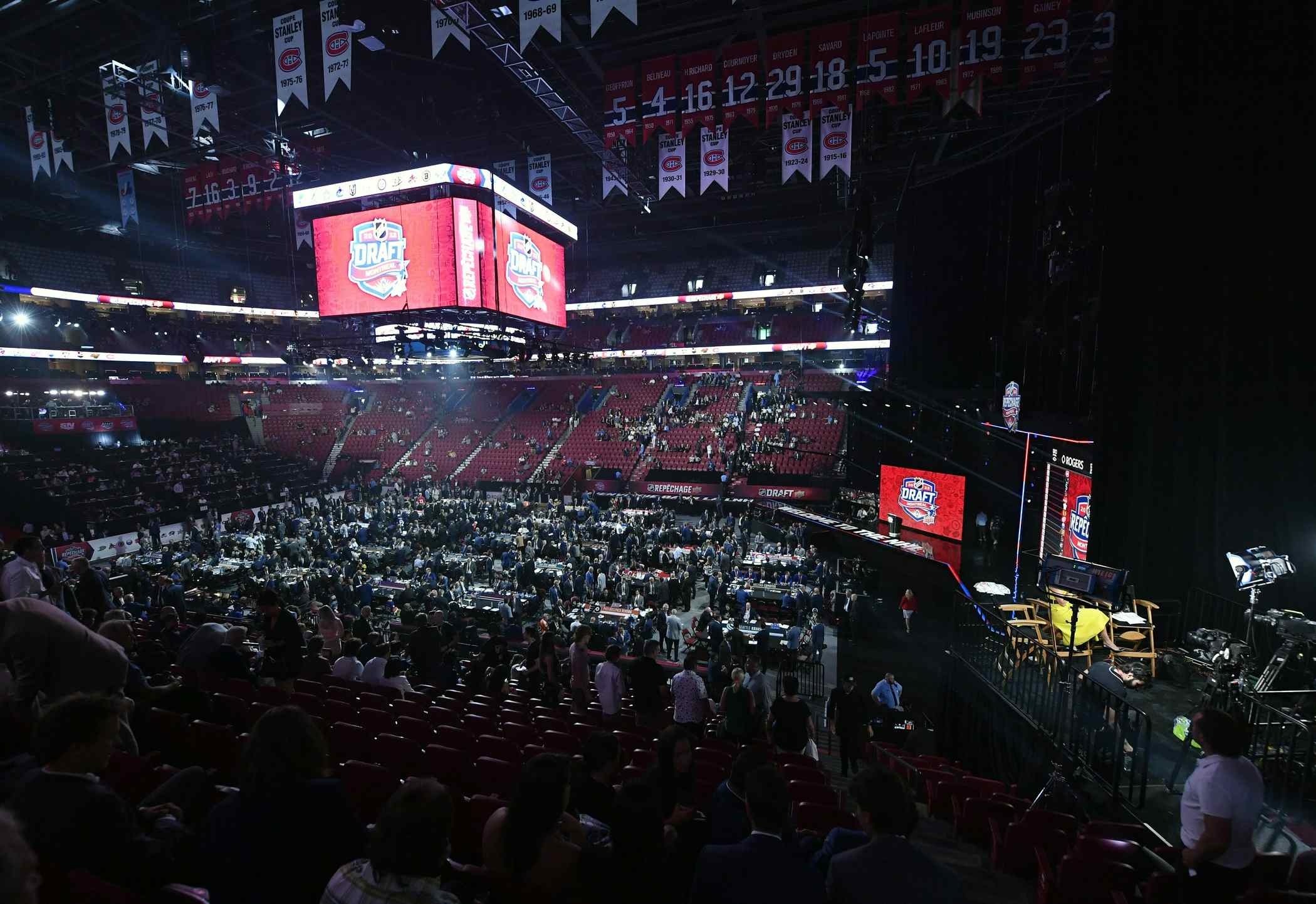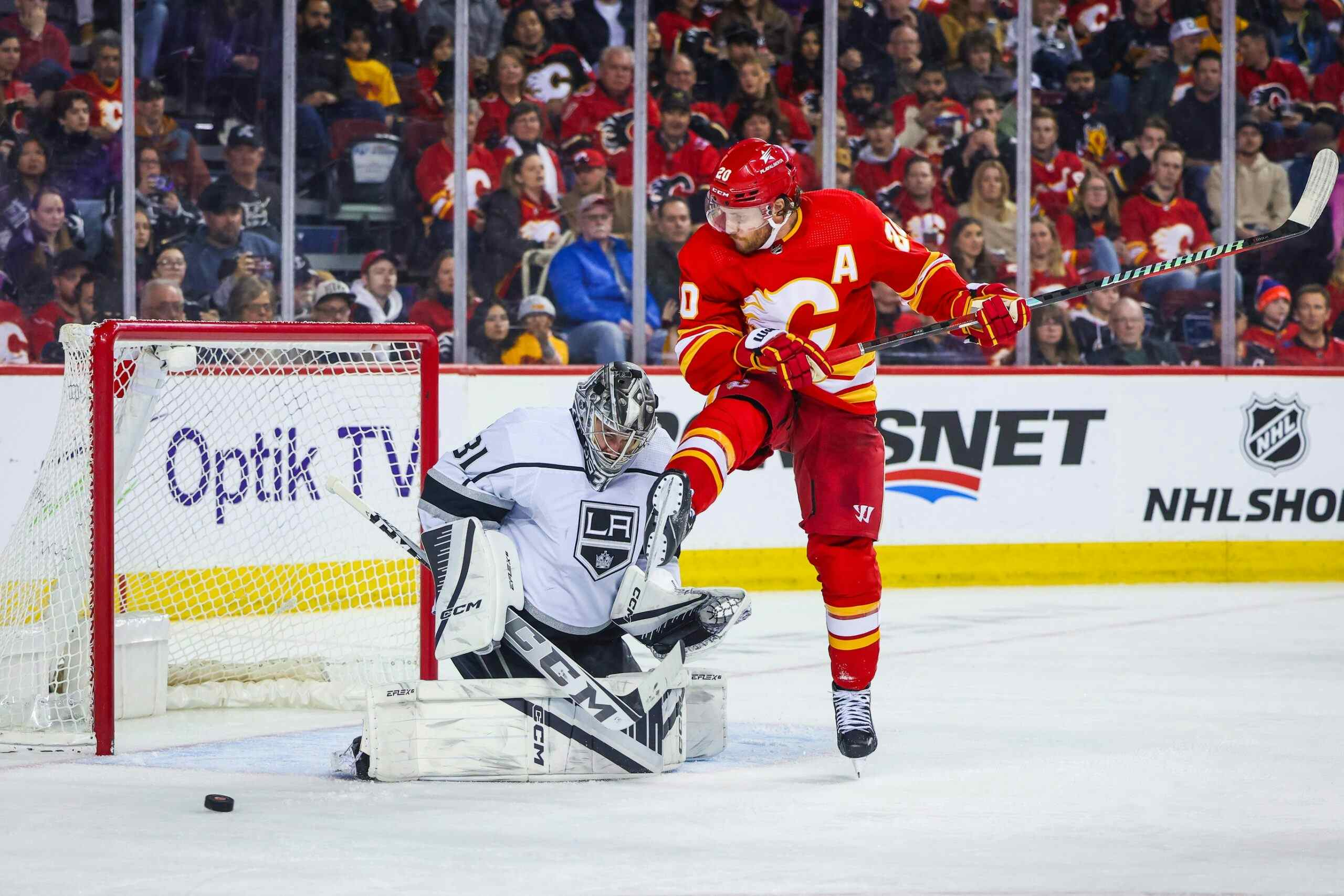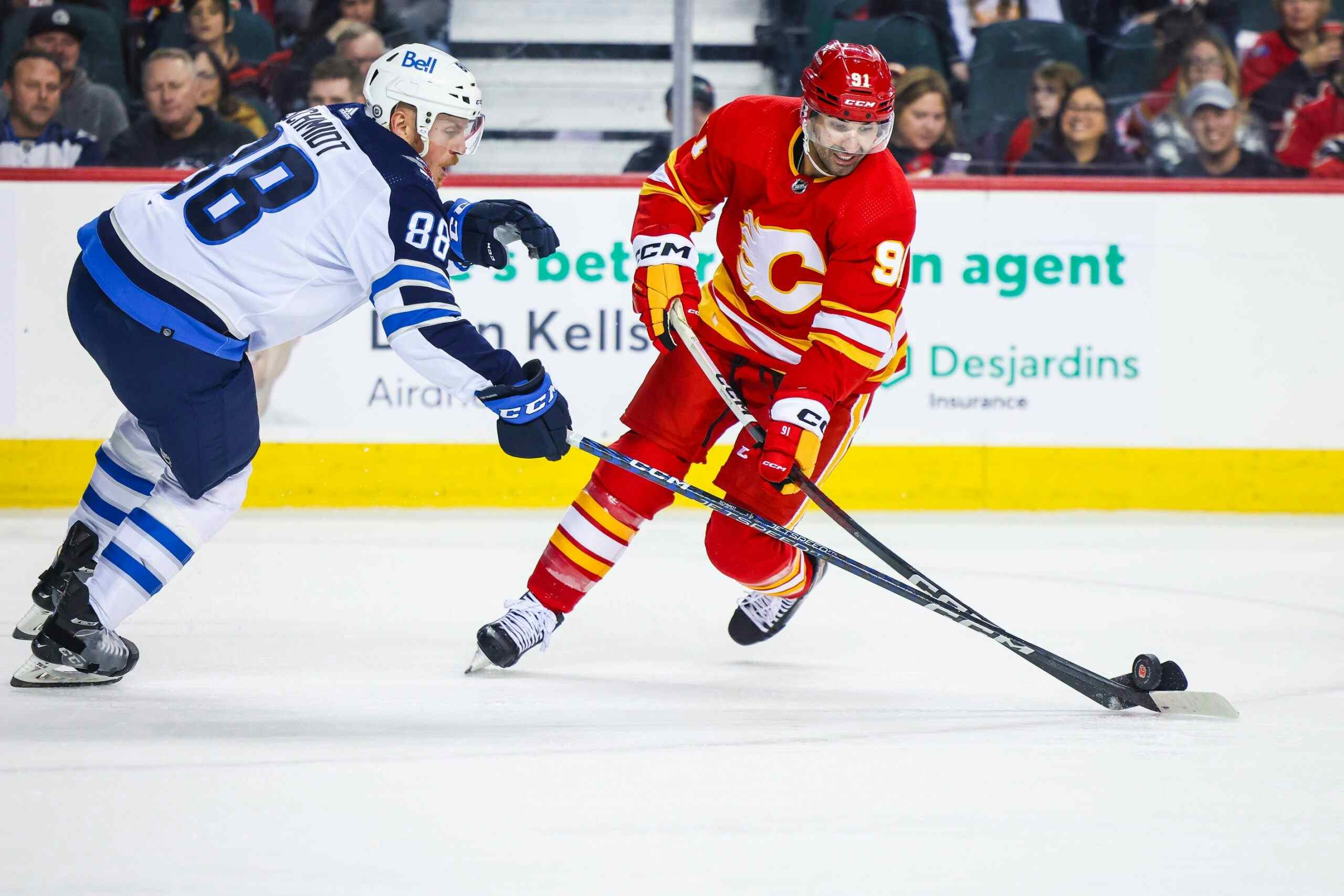Where Do Scoring Chances Come From?
By Ryan Pike
9 years agoIt’s Monday and we’re all on a high after a really fun Grey Cup game last night, so it’s probably good time to chat stats!
We’ve been tracking two key metrics here at FlamesNation: scoring chances and zone entries. The interesting thing is how they mesh together.
SCORING CHANCES
Scoring chances have been a staple stat here at FlamesNation for many years.
Short form: scoring chances are shot attempts – missed shots, blocked shots or shots on goal – taken from within the “home plate” area shown below.

The logic behind valuing scoring chances is that the home plate area is the part of the ice where shooters tend to have the highest shooting percentage. In essence, shots here have more value. Teams can increase their odds of winning by keeping their opponents to the outside – out of the scoring chance area – because it minimizes their odds of scoring. (Fun fact: this is where the term “low percentage shot” comes from!)
Even-strength scoring chances are often used as a measure of how much a player contributes to the success of their team. Much like Corsi (Close) and Fenwick (Close), scoring chance percentage is held as a predictor of wins and standings points.
ZONE ENTRIES
One of the newer things being studied by the analytics community (stick-tap to Eric Tulsky for driving the study of them), zone entries are gradually increasing in their importance. Why? Well, it’s all about possession.
Let’s say you’re a team with the puck, ready to attack. What do you do?
Well, you go to the net. But the other team is trying to stop you. So you have to get into the zone and get the puck into the scoring chance area. There’s two ways you can do that.
- You can dump the puck into the zone, giving up possession but potentially getting the puck behind the defenders. If you’re fast, you can regain possession and gain position. If you’re not fast, you lose possession and have to work to regain it.
- You can carry the puck into the zone, retaining possession but having a potentially tougher time getting into the zone. After all, the puck is smaller and can move faster than a 200 pound hockey player.
The pros and cons of the two approaches have been juggled by both the coaching and analytics communities. There’s no one right approach, but more and more the analytics community is pointing towards gaining and retaining possession as incredibly important to goals and wins (and long-term success).
For the sake of analysis, this season we’ve been tracking zone entries at FlamesNation. I’ve interpreted things as follows: if you enter the zone in a controlled manner and don’t immediately give up possession voluntarily, you get credited with a carry-in (e.g., you can’t skate a foot over the blueline and chuck it into the corner). If you chuck the puck over the blueline into the zone and voluntarily give up possession, or do so pretty quickly after crossing the line, it’s a dump-in. Any other method of entry into the zone (the other team ices it, the other team takes a penalty, the other team falls back into their own zone) are ignored. (You’ve probably seen the fun tables after each game with breakdowns to that effect.)
The interesting aspect, to me, and what we’re looking at right now is at the intersection of zone entries and scoring chances.
SCORING CHANCES AFTER ENTRIES
There’s a relatively simple question driving the first chunk of this inquiry: Where do scoring chances come from? In a more specific sense, we’re looking at what kinds of entries are followed by scoring chances and how often.
Over the first 25 games of the 2014-15 season, the Calgary Flames have generated 359 even-strength scoring chances. (For the curious, that’s about 14 chances per game.)
So when do these chances happen, relative to zone entries?
The Flames had 217 even-strength chances within 30 seconds of a carry-in entry, representing approximately 60.4% of all chances. On the flip-side, they had 105 chances within 30 seconds of a dump-in, representing approximately 29.2% of all chances. The remainder of the chances happened via other circumstances – primarily icings and opposition giveaways in the offensive zone.
ENTRIES THAT RESULT IN SCORING CHANCES
Okay, given that most of Calgary’s chances happen after carry-ins, why don’t they (a) carry the puck in like crazy people and/or (b) have a zillion scoring chances?
Well, most of their entries are dump-ins – 1,296 even-strength dump-ins versus 800 even-strength carries. This can be for a million different reasons – strategy (getting behind defenders with speed), situation (tired players buying time for a line change), injury (players trying to avoid contact) or lack of skill. However, even acknowledging this disparity in carries and dumps, something interesting emerges from the data.
Carry-ins, even with how rare they are relative to dump-ins, are much more effective at generating chances. Calgary converts carry-ins to scoring chances at a rate of about 27.1%, while dump-ins convert at about 8.1% – indicating that carrying in the puck is more than THREE TIMES more likely to result in a scoring chance than a dump-in.
It makes sense that that would be the case, given the fact that dump-ins (by definition) give up possession, but that carry-ins are that much more instrumental in scoring chances is itself quite noteworthy.
SUM IT UP
I’ll be honest, I find the numbers pretty neat.
As we get further into the season, we’ll be digging into the individual-level data – which is a bit more messy and prone to sample-size irregularities, which is why I’m delaying looking at them until around the half-way mark.
It’s also interesting to see what happens later in the season. Can the Flames maintain their speed game? If you follow the team – and if you’re one of our regular readers (thank you!), you probably do – you know that the guys that generally rush in with speed are folks like Sean Monahan, Johnny Gaudreau, Mikael Backlund, Paul Byron and Sven Baertschi.
If I know that and you know that, and we presume that the other 29 NHL teams have advance scouts, video coaches and at least a cursory knowledge of coaching and strategy, then the big question will be how long the Calgary Flames can play the speed game effectively with the other teams trying to counter it.
(For the record, this is what the talking heads are referring to when they say “The Flames aren’t going to surprise anybody going forward.”)
It’s going to be fascinating, both in the data and on the ice, to see them try.
Recent articles from Ryan Pike





